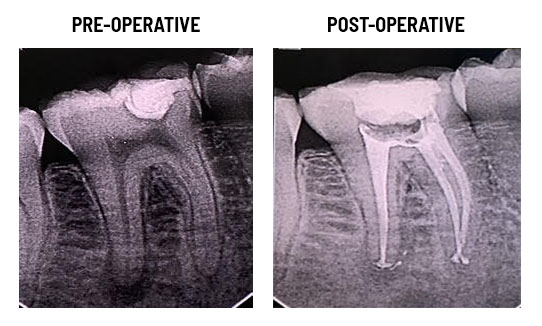info@dentallifeline.com
Blog
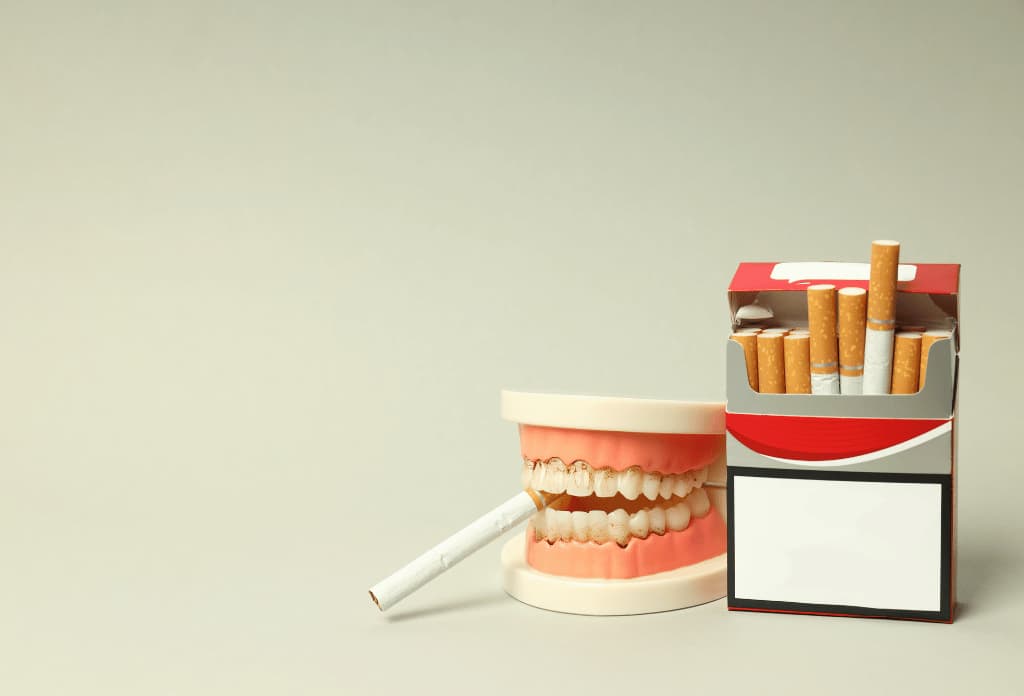 27 Sep 2023
27 Sep 2023
How Smoking Affects Your Oral Health: Risks and Quitting Strategies
Introduction
Smoking is a well-known health hazard, linked to various serious illnesses such as lung cancer and heart disease. However, its detrimental effects are not limited to the lungs and heart; smoking also wreaks havoc on your oral health. In this blog post, we will explore how smoking impacts your mouth, teeth, and gums, and we’ll discuss effective strategies to quit this harmful habit.
The Impact of Smoking on Oral Health
- Stained Teeth: Smoking is a leading cause of tooth discoloration. The tar and nicotine in tobacco can result in unsightly yellow or brown stains on your teeth, which can be challenging to remove even with professional teeth whitening.
- Bad Breath: Smoking leaves a distinct and unpleasant odor in your mouth. It can lead to chronic bad breath, which can be socially embarrassing.
- Increased Risk of Gum Disease: Smoking weakens your immune system and reduces blood flow to the gums. As a result, smokers are at a significantly higher risk of developing gum disease, including periodontitis. This can lead to tooth loss and other serious oral health issues.
- Tooth Decay: Smoking can cause a decrease in saliva production, which is essential for neutralizing acids and protecting teeth from decay. This, coupled with poor oral hygiene practices often associated with smoking, increases the risk of cavities.
- Oral Cancer: Perhaps the most alarming consequence of smoking is the increased risk of oral cancer. Smokers are at a much higher risk of developing cancer of the mouth, lips, tongue, and throat. Oral cancer can be life-threatening and may require extensive treatment.
- Delayed Healing: Smokers may experience slower healing after dental procedures, extractions, or oral surgeries. This is because smoking restricts blood flow, which is essential for the healing process.
- Tooth Loss: The combination of gum disease, tooth decay, and delayed healing can ultimately lead to tooth loss in smokers. Tooth loss can have a profound impact on one’s oral health and quality of life.
Quitting Smoking: Strategies for Success
Quitting smoking is one of the best decisions you can make for your oral health and overall well-being. Here are some strategies to help you kick the habit:
- Seek Support: Talk to your healthcare provider, dentist, or a smoking cessation counselor for guidance and support.
- Nicotine Replacement Therapy (NRT): Consider using NRT products such as nicotine gum, patches, or lozenges to help manage cravings.
- Prescription Medications: Some prescription medications, such as varenicline and bupropion, can assist with smoking cessation. Consult a healthcare professional to see if they are suitable for you.
- Behavioral Therapy: Cognitive-behavioral therapy and support groups can provide valuable tools and encouragement to quit smoking.
- Set a Quit Date: Choose a specific date to quit smoking and stick to it. Mark it on your calendar as a significant milestone.
- Identify Triggers: Recognize the situations or emotions that trigger your smoking habit and find healthier alternatives to cope with them.
- Stay Active: Regular physical activity can help reduce nicotine cravings and improve your overall health.
Conclusion
Smoking poses a grave threat to your oral health, increasing the risk of tooth decay, gum disease, oral cancer, and more. Quitting smoking is a challenging but essential step toward preserving your teeth and gums. If you’re a smoker, don’t wait to take action. Seek support and adopt strategies to quit smoking, and consult with your dentist to address any oral health issues that may have arisen due to smoking. Your smile and overall health will thank you for it.
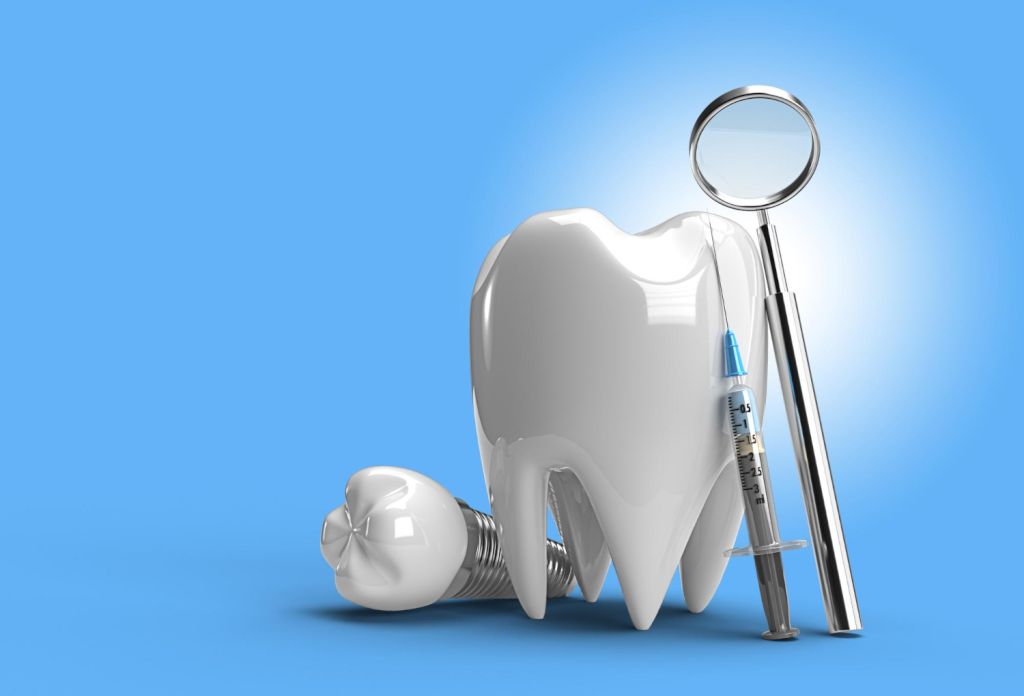 14 Sep 2023
14 Sep 2023
Dental Implants
Are medical devices surgically implanted into the jaw to restore a person’s ability to chew or their appearance. They provide support for artificial (fake) teeth, such as crowns, bridges, or dentures.
Background
When a tooth is lost due to injury or disease, a person can experience complications such as rapid bone loss, defective speech, or changes to chewing patterns that result in discomfort.
Replacing a lost tooth with a dental implant can significantly improve the patient’s quality of life and health.
The dental implant body is surgically inserted in the jawbone in place of the tooth’s.
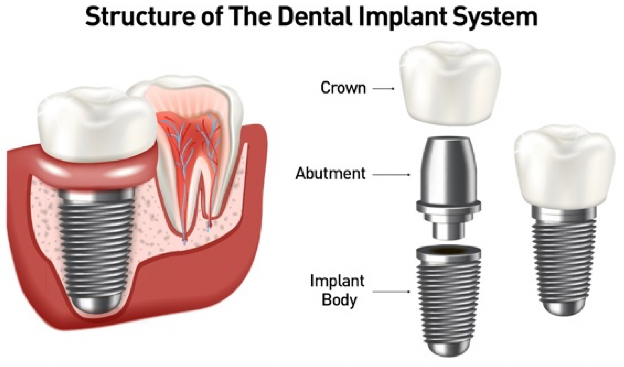
Benefits of Dental Implant Systems:
- Restores the ability to chew
- Restores cosmetic appearance
- Helps keep the jawbone from shrinking due to bone loss
- Preserves the health of the surrounding bone and gums
- Helps keep adjacent (nearby) teeth stable Improves quality of life
Implants have several advantages over dentures, which are removable artificial teeth:-
- are more natural and comfortable
- have a higher success rate
- improve chewing function
- lead to a lower risk of cavities developing in nearby teeth
- lead to better maintenance of bone at the site of the lost tooth
- cause decreased sensitivity in nearby teeth do not need to be taken out and cleaned every night.
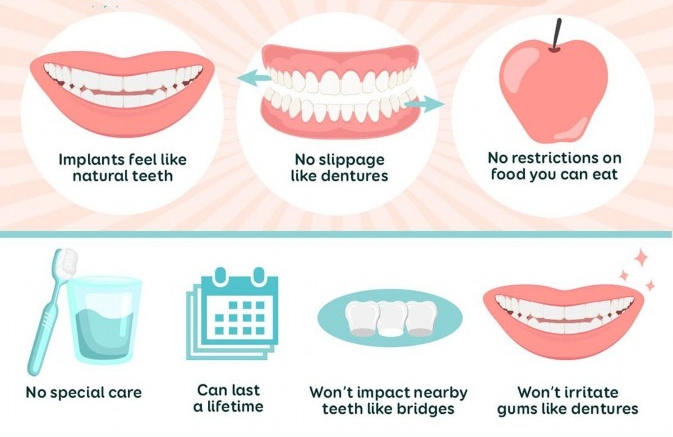
Recommendations for Patients
Before choosing dental implants, talk to your dental provider about the potential benefits and risks, and whether you are a candidate for the procedure.
Things to consider:
- Your overall health is an important factor in determining whether you are a good candidate for dental implants, how long it will take to heal, and how long the implant may stay in place.
- Ask your dental provider what brand and model of dental implant system is being used and keep this information for your
- Smoking may affect the healing process and decrease the long-term success of the implant.
After the dental implant procedure:
- Carefully follow the oral hygiene instructions given to you by your dental Regularly cleaning the implant and surrounding teeth is very important for long-term success of the implant.
- Schedule regular visits with your dental
If your implant feels loose or painful, tell your dental provider right away.
Safety
According to the American Academy of Implant Dentistry, around 3 million people in the United States have dental implants, and this number increases by about 500,000 every year. Dental implant surgery is safe when a qualified and experienced surgeon or dentist performs it. It is also the only dental restoration option that maintains the health of the person’s jawbone and stimulates its growth.
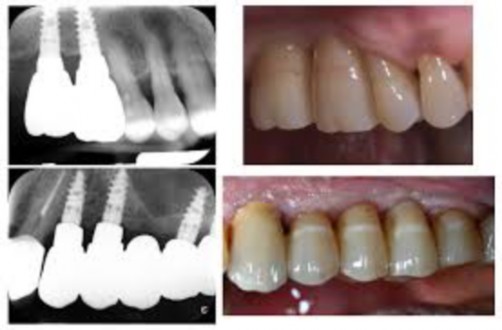
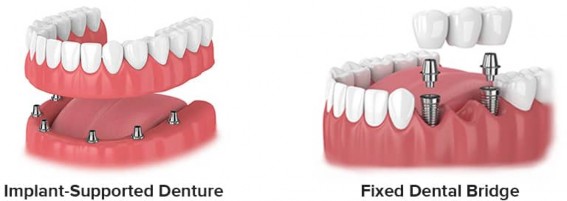
An implant-supported denture is an oral appliance that replaces several teeth at once.
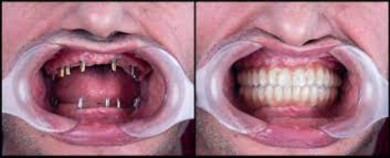
It’s similar to a traditional denture. But instead of resting on top of your gums, an implant-supported denture attaches directly to your jawbone using dental implants.
Removable implant-supported dentures
This type of denture “snaps on” to dental implants in your jawbone. It stays securely in place until you’re ready to remove it. With this option, you can take your dentures out every day for easy cleaning.
Fixed implant-supported dentures
A fixed denture — sometimes called a hybrid denture — attaches permanently to dental implants in your jawbone. You can’t remove it at home, but your dentist can remove it for maintenance when necessary.
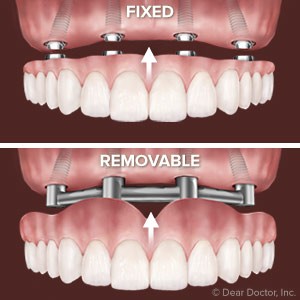
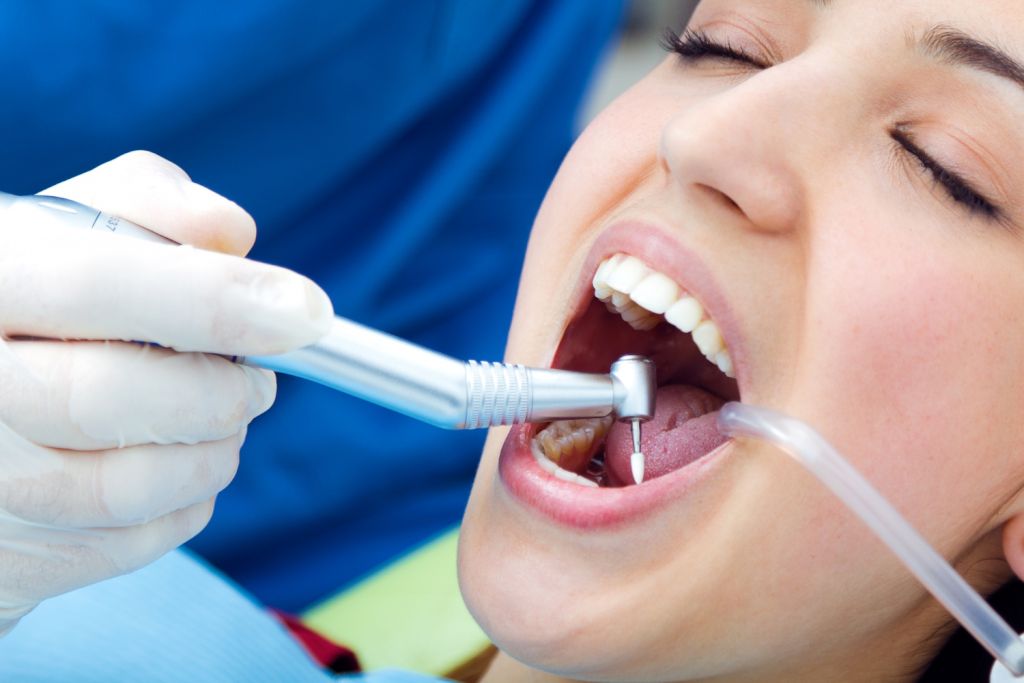 14 Sep 2023
14 Sep 2023
Dental Sealants
Dental sealants are thin, protective coatings that shield the chewing surfaces of your back teeth from harmful, cavity-causing bacteria.
What are dental sealants made of?
- Resins (plant or synthetic)
- Glass ionomers (glass powder combined with a water-soluble acid)
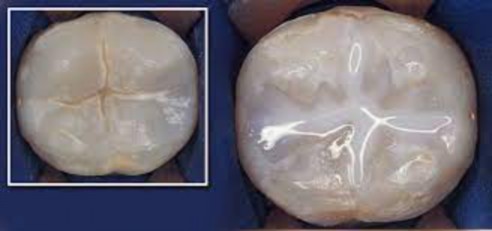
What is the purpose of sealants?
Dentists place sealants to protect your teeth from disease-causing bacteria. Your back teeth have deep grooves that help you grind up food when you chew. Food and bacteria can become trapped in these grooves, leading to tooth decay (cavities) over time. Sealants coat these areas so bacteria can’t reach them.
If a patient has a higher cavity risk in childhood and his adolescence teeth. Should we wait for the caries to develop in pits and then fill them?
The answer is No.
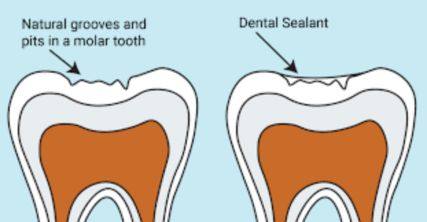
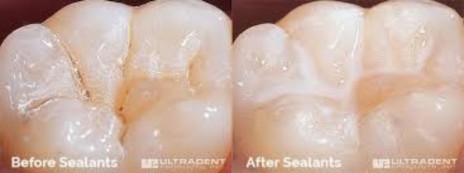
In such cases preventive measure in form of sealants is greatly required. Studies have shown that 80% caries reduction after 1 year after a single application of sealant.
- Sealant mechanically filled on the deep pits with acid resistant
- Since we are sealing the deep pits prior so now they will be no habitat for
- Thirdly, the tooth becomes more carious to
What are the benefits of dental sealants?
While diligent oral hygiene removes plaque, food and debris from your teeth’s smooth surfaces, brushing and flossing can’t always get into all the nooks and crannies. Sealants shield these vulnerable areas from cavities by “sealing out” bacteria, plaque and food particles.
Who needs dental sealants?
Children and teenagers are popular candidates for dental sealants. But adults without decay or dental fillings in their molars can also benefit from this treatment. In general, anyone who’s prone to tooth decay on their back teeth should consider sealants.
What is the recovery time?
There’s no downtime after dental sealant placement. You should be able to go back to work or school immediately.
How long do tooth sealants last?
Sealants last up to five years. For best results, you’ll need to have your sealants replaced on a regular basis.
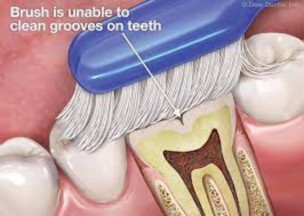
When can I eat or drink?
You can resume normal eating and drinking right after your appointment. However, it’s important to know that extremely hard, sticky or chewy foods can chip or erode your new sealants. It’s best to consume these foods in moderation.
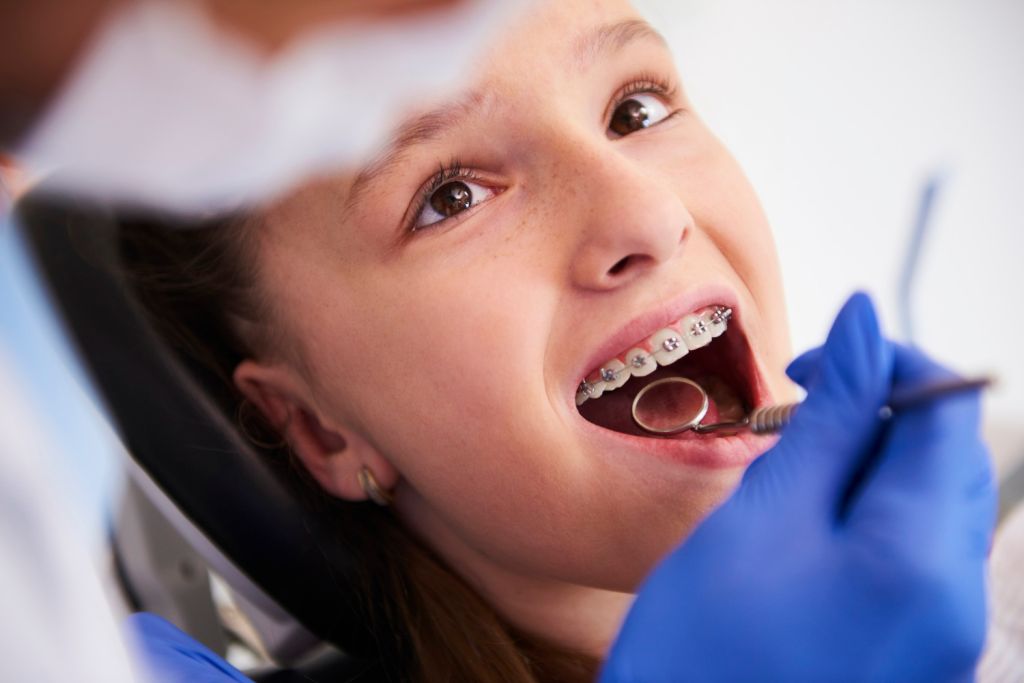 14 Sep 2023
14 Sep 2023
Know about DENTAL BRACES
- Braces can correct a wide range of dental issues, including crooked, gapped, rotated or crowded teeth.
- There are several types of braces, including traditional metal braces, ceramic braces and clear aligners like Invisalign®.
- Braces improve your smile’s health, function and appearance.
TYPES OF DENTAL BRACES
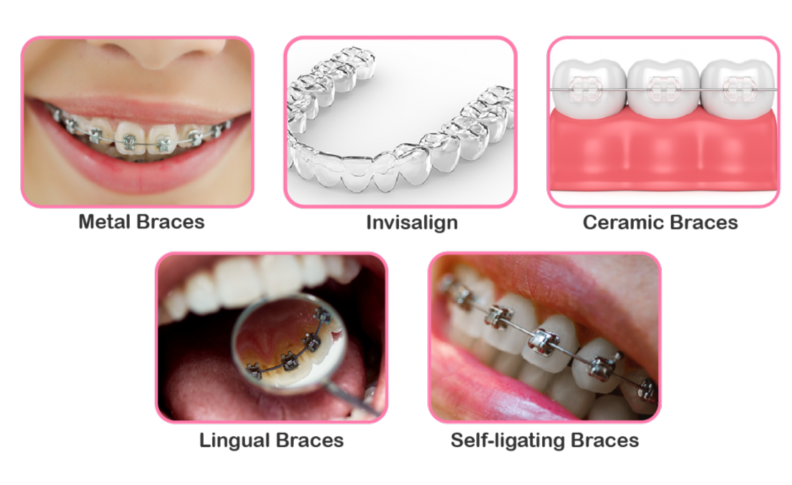
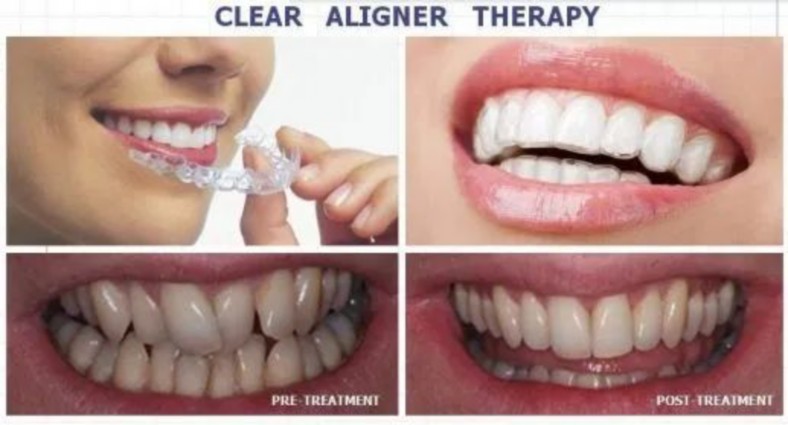
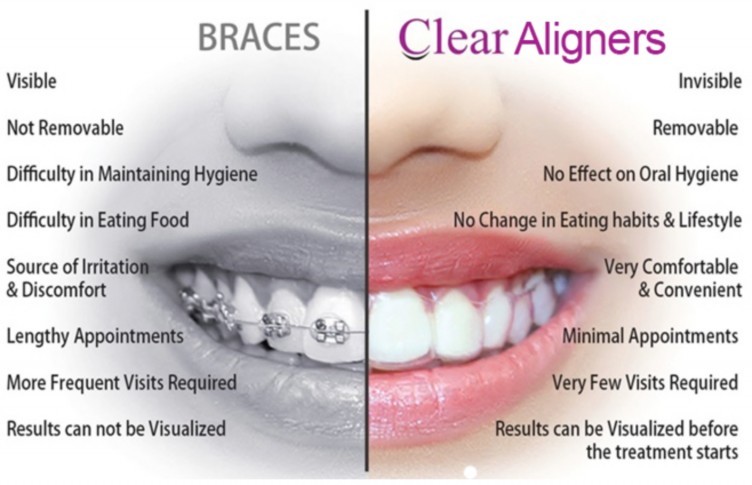
What age is best for braces?
You’re never too old for orthodontics. That said, the best time for braces is generally between the ages of 9 and 14. At this point, your jaws and facial bones are more malleable (flexible) because they’re still developing. Adult braces are just as effective, but it might take a little longer to achieve the desired results
How long do braces take to work?
The answer to this question is different for everyone. On average, braces treatment takes about two years to complete. But it depends on the severity of misalignment. Some people finish treatment in under 12 months. Others may need as long as three years.
What are the benefits of dental braces?
The most obvious advantage of braces is a straighter, more beautiful smile. But braces can also:
- Make your teeth easier to
- Help prevent cavities and gum
- Correct temporomandibular joint (TMJ) disorders.
- Restore proper functions like chewing and
In short, braces can improve the health, function and appearance of your smile
What are the normal side effects of braces?
There are some mild, expected side effects of braces, including:
- Temporary discomfort (which usually occurs the first day and any time your dentist tightens your braces).
- Irritation on your tongue, lips or inner
- Jaw pain.
- Difficulty eating (especially after a tightening).
You can manage most of these side effects with over-the-counter (OTC) pain relievers. You can also purchase dental wax for braces at your local pharmacy to help with irritation inside your mouth. Simply place some wax over any rough- feeling brackets or wire.
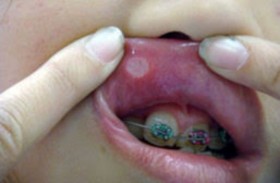
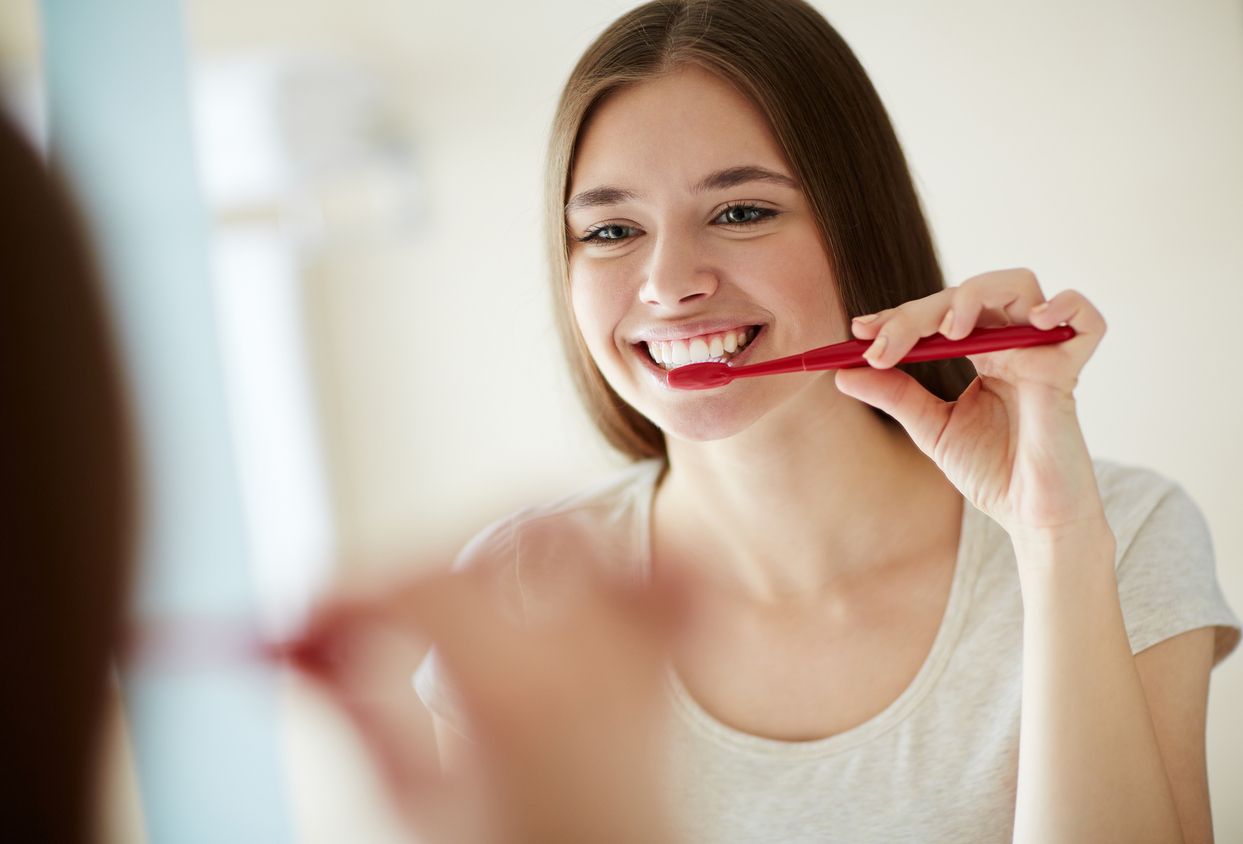 19 Apr 2023
19 Apr 2023
Stop tooth decay in its Tracks
STOP TOOTH DECAY IN ITS TRACKS
The main method of prevention of various oral diseases like dental caries, gingivitis and periodontitis is by effective plaque removal. Self oral hygiene maintenance is mainly by tooth brushing, mouth-rinses and flossing.
It is important that an individual is aware of the proper brushing technique that he or she has to follow in order to maintain oral hygiene. Toothbrush design, brushing duration, parental involvement, and the brushing method, manipulative skill, and manual dexterity of the child are the most cited determinants of the effectiveness of toothbrushing.
PERFORM THESE STEPS FOR A BETTER ORAL HYGIENE
Step 1: Start with the outer surfaces of your teeth. Take your time! Gently brush upper and then lower teeth.
Step 2: Tilt your brush at a 45° angle. Brush against the gum line to get rid of any trapped plaque or food debris. Gently move the brush back and forth using short strokes.
Step 3: Brush the inner surface of your teeth. Because the insides of your teeth are not as visible. Use a 45° angle to brush back and forth to clean the inside surfaces of the teeth.
Step 4: Clean the chewing surfaces of your teeth.
Step 5: Brush your tongue for fresher breath.
Begin implementing preventative oral care with the proper brushing technique to keep your smile fresh , healthy and happy.
 24 Nov 2022
24 Nov 2022
BRIDAL DENTISTRY
Bridal dentistry is a relatively new term. However, it is in practice for many years. The correct term would be wedding dentistry.It is, of course, different from routine dental treatments, as the name suggests it mainly focuses on the smile enhancement of bride to be for the special occasion in the shortest possible time dentistry would allow us to help you in getting that perfect smile before your wedding and spare you from the embarrassment. You can smile your heart out and pose for the pictures and let the photographer capture the golden moments of your life.
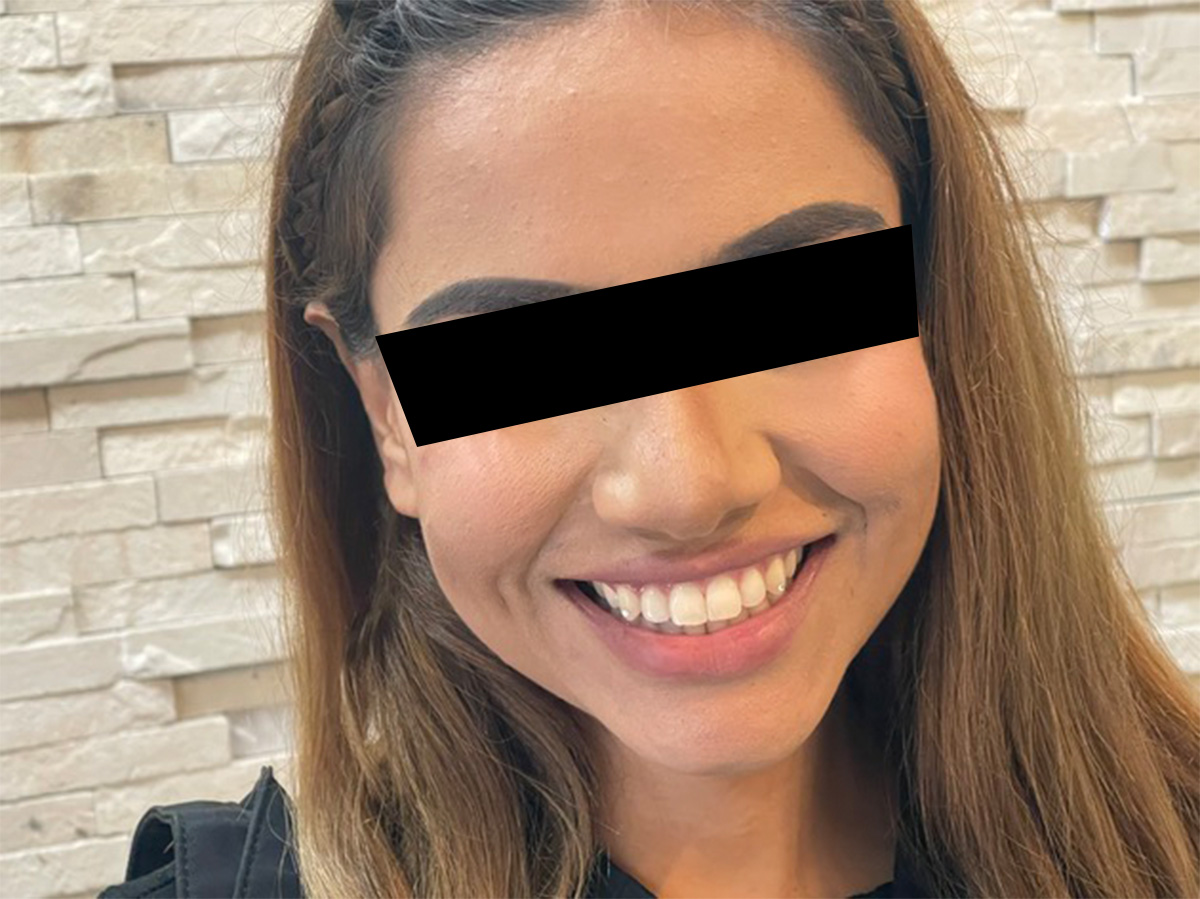 Getting your teeth cleaned professionally before your big day is a no-brainer. “A clean, healthy set of teeth also serve as the foundation for subsequent whitening procedures that can further improve your smile. Plus, cleaning procedures help identify the areas that demand further professional intervention, and those that cannot be dealt with at home.
Getting your teeth cleaned professionally before your big day is a no-brainer. “A clean, healthy set of teeth also serve as the foundation for subsequent whitening procedures that can further improve your smile. Plus, cleaning procedures help identify the areas that demand further professional intervention, and those that cannot be dealt with at home.
Gone are the days of using dadi ke nuskhe for all your problems and using baking soda while brushing your teeth. Let the experts do their magic. When you are looking for an easy way to bring that shine to your smile, TEETH WHITENING is a solid place to start. It is quickest, safest and the most effective option for the patients with healthy but yellow, discolored or stained teeth. It gets you beaming with pearly whites. It is performed after teeth cleaning to allow the increased action of bleaching agents on the teeth. It is a quick in-office procedure so you don’t end up dawdling your precious time in a dental clinic.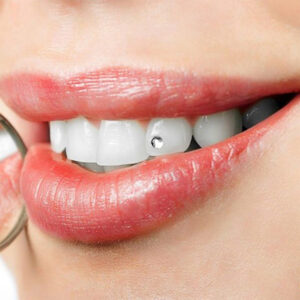 DENTAL JEWELRY adds extra sparkle into more and more smiles. jewels are applied to the labial surfaces of upper anterior teeth. The trend is catching up with youngsters. If somebody thinks he or she was better off without tooth jewellery, it can be easily removed without any side effects on the dental tooth structure as the procedure is non-invasive. What’s more, tooth jewellery can be fixed again at a later stage.Cosmetics will help you get a beautiful face but a perfect dazzling smile and perfectly aligned teeth will make you look young, active and confident.
DENTAL JEWELRY adds extra sparkle into more and more smiles. jewels are applied to the labial surfaces of upper anterior teeth. The trend is catching up with youngsters. If somebody thinks he or she was better off without tooth jewellery, it can be easily removed without any side effects on the dental tooth structure as the procedure is non-invasive. What’s more, tooth jewellery can be fixed again at a later stage.Cosmetics will help you get a beautiful face but a perfect dazzling smile and perfectly aligned teeth will make you look young, active and confident.
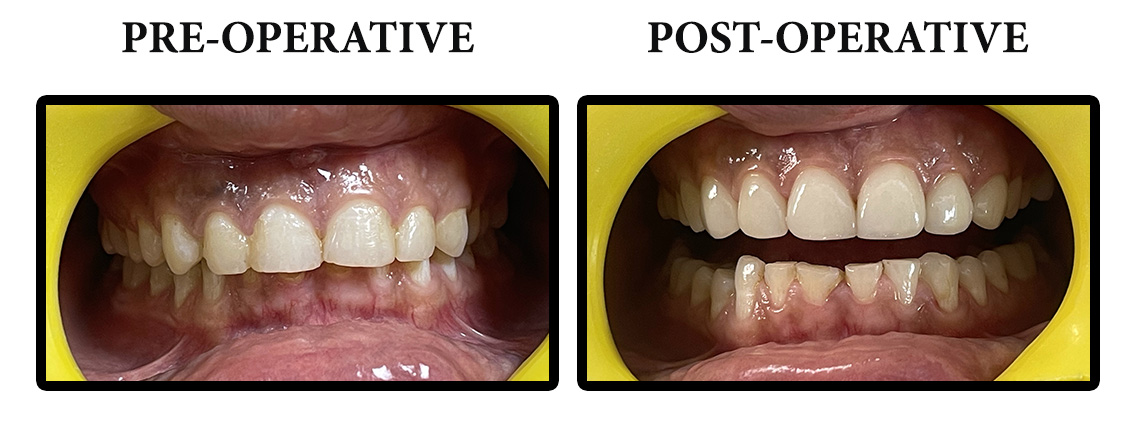 For that star-studded smile customized just for you. DENTAL VENEER are a thin shell of porcelain or composite that is attached to the natural tooth to cosmetically enhance the smile and compliment your overall face. It can disguise heavy discoloration, chipped off, fractured teeth or even a gap in your smile. It is as thin as contact lens. This brings us to another information regarding dental veneers. There is a common myth about veneers, which is that dentist has to cut our tooth for veneers.The preparation for a dental veneer is hardly 0.5 mm on a very few surfaces of teeth, mostly over a single surfaceIt is completely safe and no reported sensitivity after the veneer treatment was noted from any of my patients.
For that star-studded smile customized just for you. DENTAL VENEER are a thin shell of porcelain or composite that is attached to the natural tooth to cosmetically enhance the smile and compliment your overall face. It can disguise heavy discoloration, chipped off, fractured teeth or even a gap in your smile. It is as thin as contact lens. This brings us to another information regarding dental veneers. There is a common myth about veneers, which is that dentist has to cut our tooth for veneers.The preparation for a dental veneer is hardly 0.5 mm on a very few surfaces of teeth, mostly over a single surfaceIt is completely safe and no reported sensitivity after the veneer treatment was noted from any of my patients.
Feeling intrigued about these smile-enhancing procedures? It’s time for you to get one from the best dental clinic in Chandigarh where the team of best dentists leave no stone unturned to make sure your smile dazzles on your big day and you come up as your best confident self. Which option did you like the most? Let us know!! For any further queries contact us on +0172-5087111,+91 82830-50396!
Which option did you like the most? Let us know!! For any further queries contact us on +0172-5087111,+91 82830-50396!
 09 Nov 2022
09 Nov 2022
Prevention Tips & Safe Treatment for Pregnancy Gingivitis.
Oral Health and Pregnancy
Some women experience swollen, tender and bleeding gums. Plaque build-up on the teeth is what causes bleeding gums. Hormonal fluctuations might leave your gums more prone to plaque, causing inflammation and bleeding.
Pregnancy Gingivitis:
It is caused by an increase in estrogen and progesterone levels. These are essential hormones that help your baby grow and develop, but they also cause many changes to your body. One of these changes is increased inflammation of your gums. Healthcare providers think it may be due to:
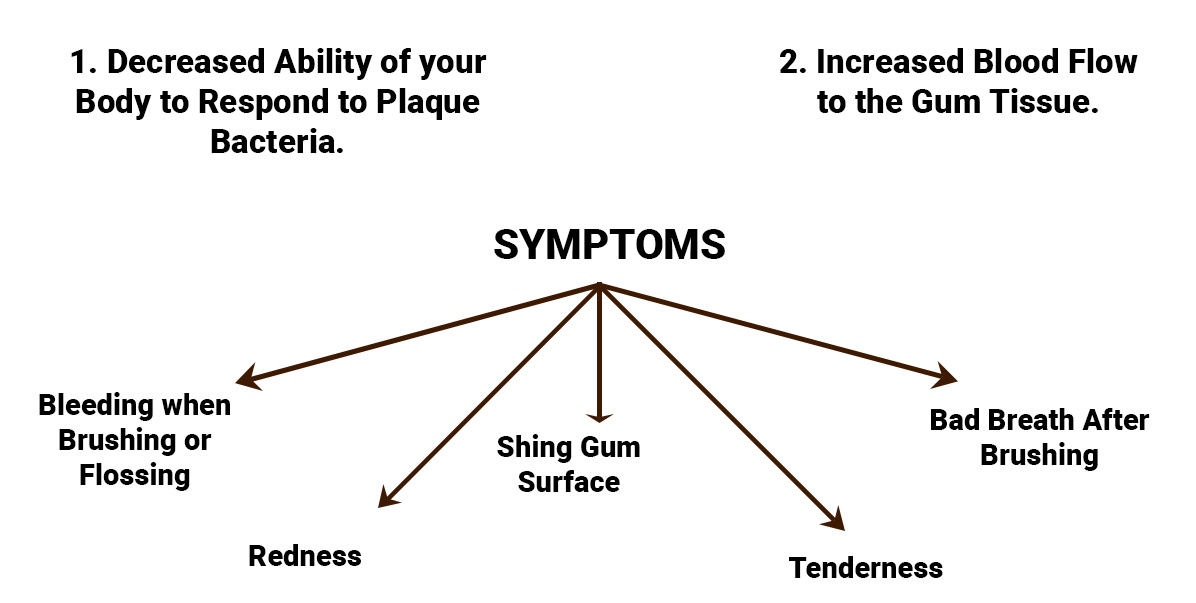
How can I prevent Pregnancy Gingivitis?
Nothing can be done to change your hormone levels during pregnancy, but you can take some steps to prevent it.
- Maintain your oral health by brushing twice a day and flossing a day.
- Schedule a dental visit with us, while you’re pregnant.
For improving your dental health:
- Eat a healthy diet.
- Lower your intake of sugary foods and beverages.
- Brush after eating sticky sweet foods clinging to your teeth.
Points to Remember
- Many women can develop gum disease during pregnancy because of natural hormonal changes in the body. Make sure to treat your teeth and gums early, to avoid this.
- Gum disease can lead to premature birth or a low birth weight baby. Sometimes, it can also cause the transfer of decay-causing bacteria from your to your baby.

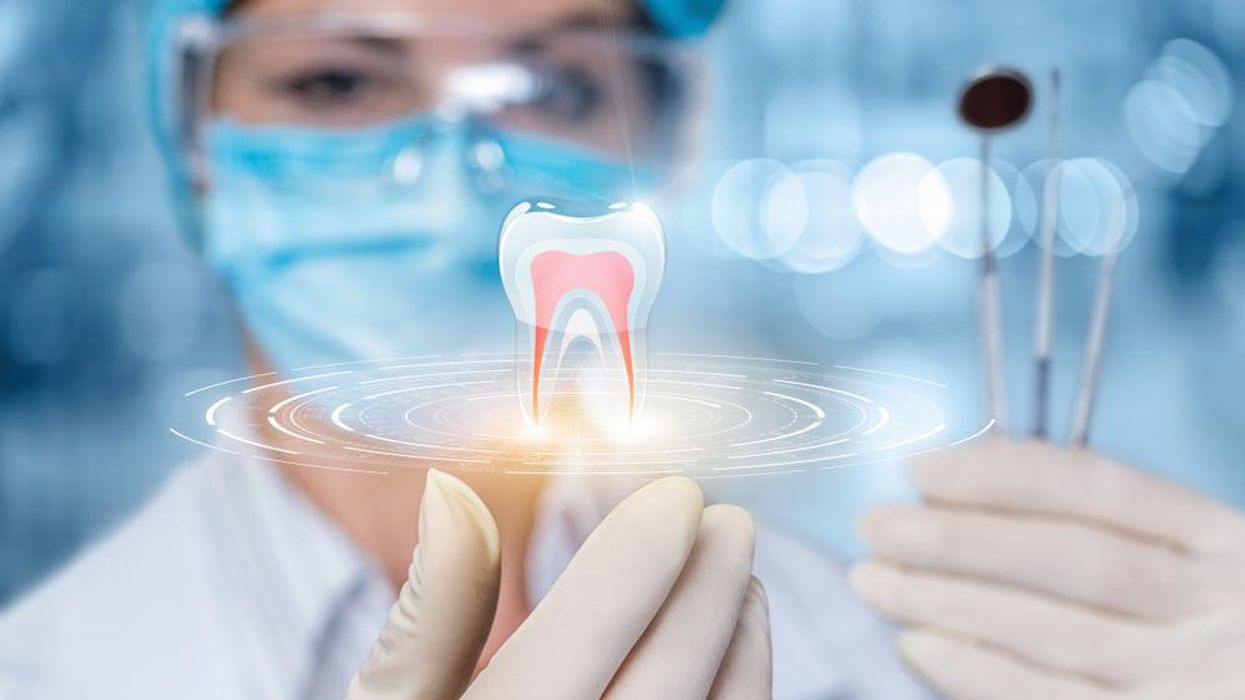 04 Feb 2022
04 Feb 2022
Advancements in ROOT CANAL medicine; Some medicines heal doubts as well as diseases!
Root canal infections also called periapical (PA) lesions are characterized histologically by fibrous and granulation tissue infiltrated to varying degrees by acute and chronic inflammatory cell. The main purpose of this clinical study was to assess the treatment of periapical lesion and infection and results up to 6 months after endodontic treatment of teeth with periapical pathology using a new MTA sealer.

A 10 year old girl reported to the clinic with the complaint of swelling and pain of anterior right upper region. The IOPA x-ray evaluation revealed periaical lesion. Treatment started with root canal treatment of the affected tooth. After access preparation using endo z bur, repeated canal irrigation was done using sodium hypochlorite 3%. After completing biomechanical preparation with protaper gold repeated dressings were done using metapex and tri antibiotic paste. After waiting for few months the root canal filling was done using latest filling material MTA, MTA, present in the composition of MTA Fillapex, is more stable than calcium hydroxide, providing constant release of calcium ions for the tissues and maintaining a pH which elicits antibacterial effects. The tissue recovery and the lack of inflammatory response are optimized by the use of MTA. Thus, MTA Fillapex is considered a great material for root canal treatment, considering its bioactive potential.
THIS BIOACTIVE MATERIAL HELPED US ACHIEVE GREAT RESULTS IN TERMS OF HEALING AND FUNCTIONALITY.

Dr. Suruchi Chaudhary
MDS, Endodontist & Cosmetic Dentist
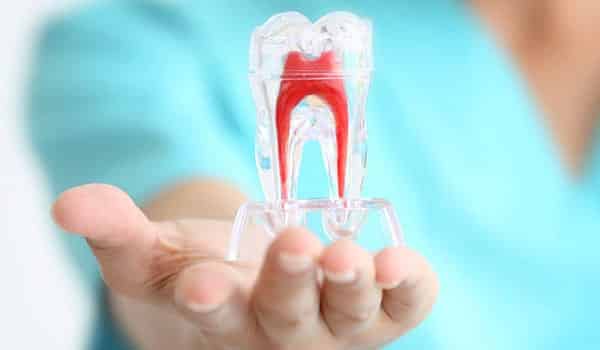 19 Jan 2022
19 Jan 2022
Striving to Make Root Canal Treatment Painless
Achieving profound anaesthesia during root canal treatment is a corner stone in endodontic practice and dentistry. Profound anaesthesia during RCT benefits not only the patient, for obvious reasons, but also the dentist who will be less stressed and worrying about patient reactions and sudden movements during the treatment.
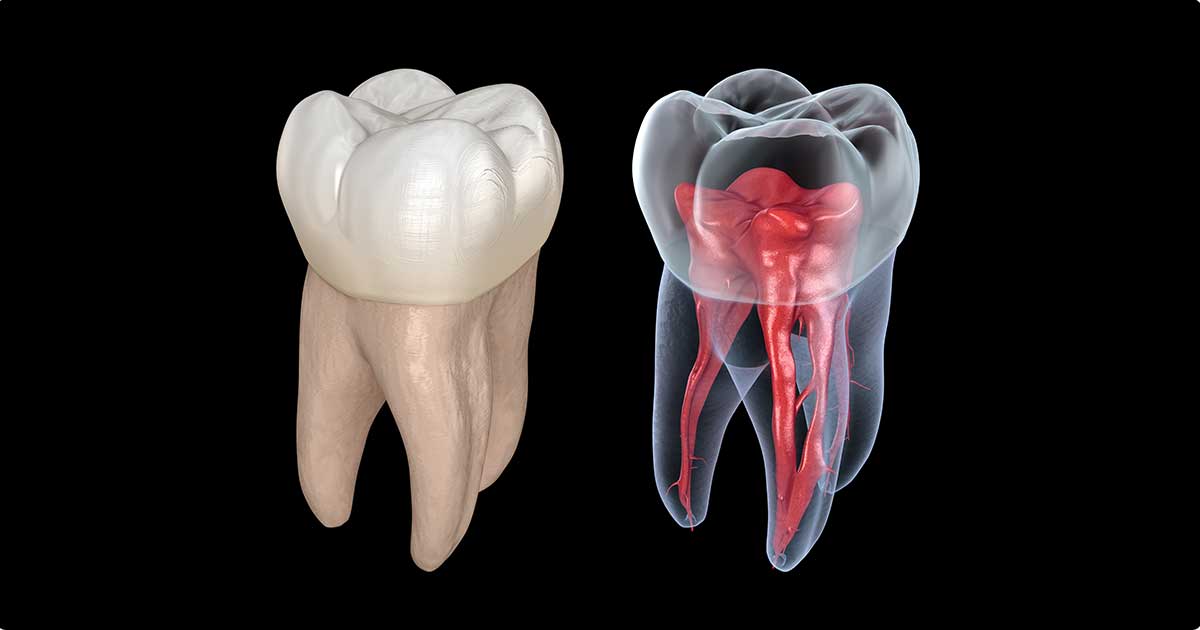
But these are cases where the nerves are chronically inflamed and patient has moderate to severe pain. In such cases giving supplemental injections in addition to the other local anaesthetic techniques is beneficial. Being able to fall back on both sets of techniques provides the dentist the confidence to provide pain free treatment for the patient.
#loveforendo#
Dr Suruchi Chaudhary
MDS, Endodontist and Cosmetic Dentist
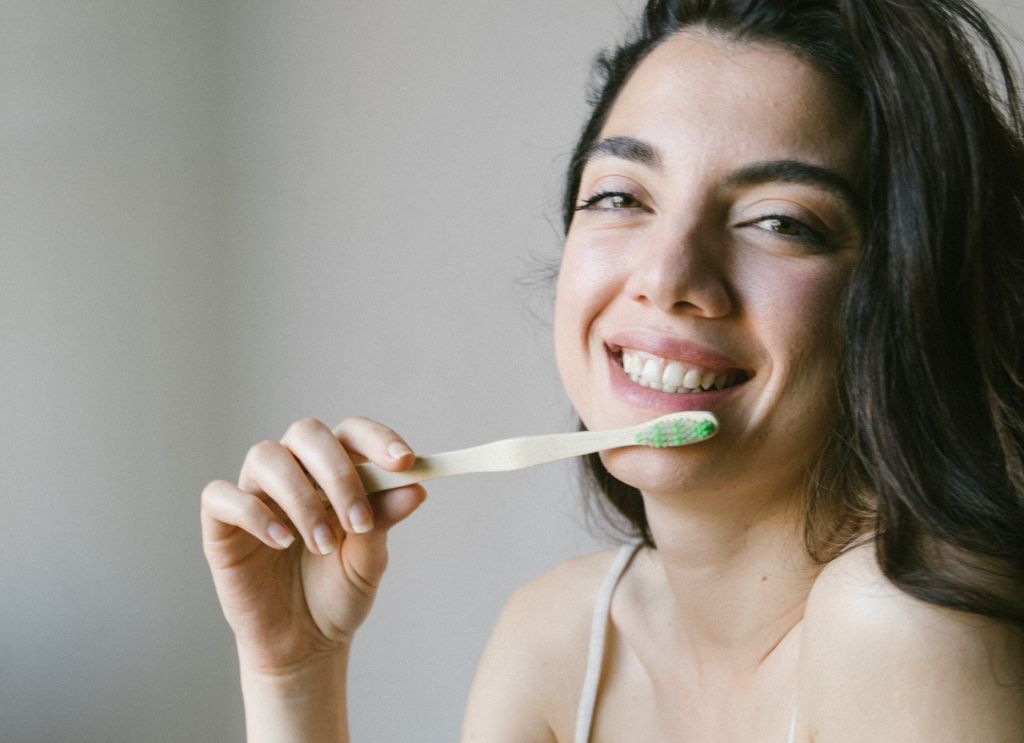 27 Sep 2021
27 Sep 2021
Am I Brushing My Teeth Right?
Brushing your teeth may be the most important part of oral hygiene. Not only does brushing keep your teeth clean, it also leaves your breath fresh and washes away bad bacteria. Brushing your teeth also helps prevent gum disease and boosts your immune system. Of course, tooth brushing only accomplishes all of these things if you do it properly! So, am I brushing my teeth right?
Tooth Brushing Tools
Every proper tooth brushing routine requires the right tools for the job.
• A soft-bristled toothbrush. It doesn’t matter if you use a manual or electric toothbrush, but it’s best to choose one with soft bristles to protect your gums and tooth enamel.
• Toothpaste with fluoride.
• Mouthwash (optional)
Once you have the proper tools at your disposal, it’s time to get down to business. Remember, you should brush at least twice per day and floss at least once per day.
Step-By-Step Tooth Brushing Guide
Have you ever thought about how you brush your teeth? When life gets busy, it’s easy to just scrub a little and move on to the next thing. Even if you think you’re doing it properly, it’s worth taking a moment to review your tooth brushing routine to make sure you’re doing it properly.
Step 1: Prep Your Toothbrush
Wet the bristles of your toothbrush with water and apply a pea-sized amount of toothpaste.
Step 2: Clean the Fronts of Your Teeth
With your toothbrush at a 45° angle, gently brush the fronts of your teeth. Try to use small, circular strokes to clean instead of scrub. Brushing too hard can damage your enamel.
Step 3: Work on the Outer Surfaces
Brush the outside surfaces, including the tops of your teeth and back molars. Pay extra attention to the bumpy surfaces of your teeth where you chew food.
Step 4: Address the Inside Surfaces
You don’t want to neglect the inner surfaces of your teeth. Though it can be a little tricky, just flip your toothbrush upside down to catch those inner surfaces and your gum line.
Step 5: Don’t Forget Your Tongue
Did you know that bacteria can build up on the surface of your tongue? Brush the top of your tongue to remove buildup and leave your breath a little fresher.
Step 6: Rinse
Spit the excess toothpaste into the sink and rinse your mouth with fresh, cold water.
So remember to ask yourself “am I brushing my teeth right?”.
Tips and Tricks for a Better Oral Care Routine
We’re not done! Now that you know how to brush your teeth properly, try these extra tips and tricks to make the most of your oral care routine:
• Brush for at least two minutes every time you brush. Some electric toothbrushes have built-in timers, but you can also sing a song, recite a poem in your head, or use another type of timer.
• Floss at least once per day to reach the spaces between teeth.
• Replace your toothbrush every three months or after you’ve been ill.
• Eat a balanced diet with plenty of fresh vegetables and limited sweets.
One of the most important aspects of any oral care routine is seeing your dentist. Regular check-ups and professional teeth cleanings allow your dentist to catch any potential issues before they become big problems.

